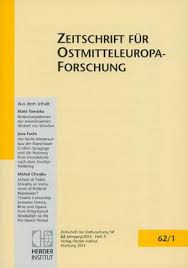Nationsbildung durch symbolische Interaktion. Der Besuch von Prager Ausstellungen um 1900 als Praxis nationaler Anerkennung
Nationalism as symbolic interaction. Visiting the turn-of-the-century Prague Exhibitions as act of national recognition
Author(s): Jos StübnerSubject(s): Communication studies, Political history, Nationalism Studies, 19th Century, Pre-WW I & WW I (1900 -1919)
Published by: Verlag Herder-Institut
Keywords: Nationalism; symbolic interaction; Prague Exhibitions; act of national recognition;
Summary/Abstract: The Prague Great Exhibitions of 1891, 1895 and 1908 provide an insight into the building of the Czech nation at the end of the Habsburg Monarchy. At the three exhibitions, two industrial and one agricultural, national activists endeavoured to demonstrate the progressiveness and cultural autonomy of the Czech nation. The way in which the visits were organised and their coverage in the media was particularly significant in the production of a sense of national self-identity. The way in which the nation presented itself varied from visitor group to visitor group. The Czech nation found itself alternately in the role of the protective “mother“ towards its own population, in the role of the progressive “elder brother“ towards its “backward“ Slav brother-nations, and in the role of the up and coming nation towards the large independent Western nations. The visitor records show how the nation was presented in terms of an anthropological model. As with an individual human being, the national entity was only to be established through communication and with reference to other entities. Seen in this light the nation is not a static institution, but the result of a dynamic process of interaction. Thus, visiting the exhibitions was an active step in this process of national self-construction through interaction. The much-famed arrival of the exhibition trains, the theatrical mass receptions at the station and the accompanying press coverage, reemphasised national identity again and again, in interchange with other groups. But, at bottom, these experiences of mutual recognition were in fact the calculated invention of transnational networks of nationalist activists.
Journal: Zeitschrift für Ostmitteleuropa-Forschung
- Issue Year: 58/2009
- Issue No: 1-2
- Page Range: 33-76
- Page Count: 44
- Language: German

